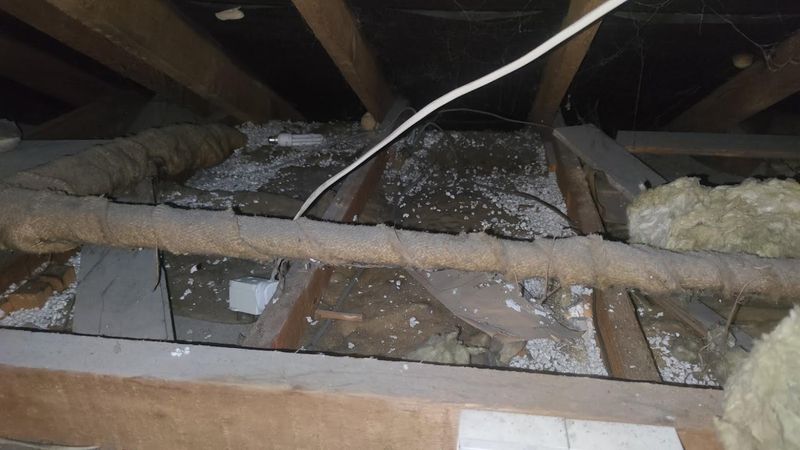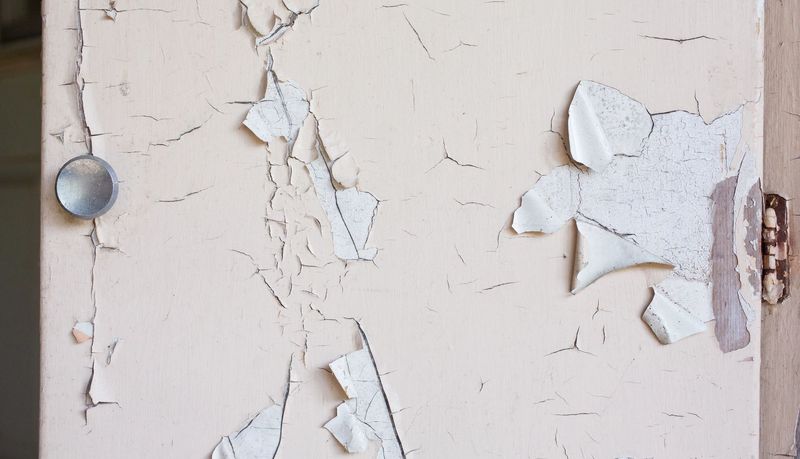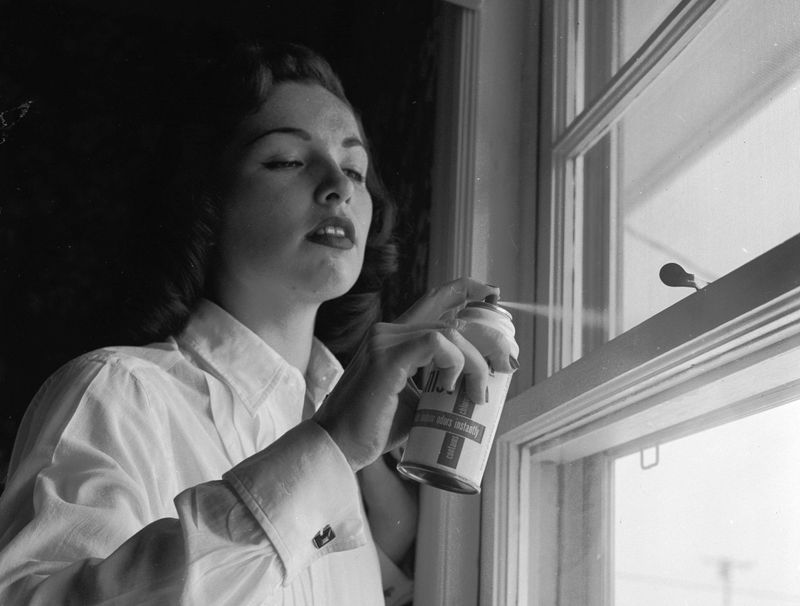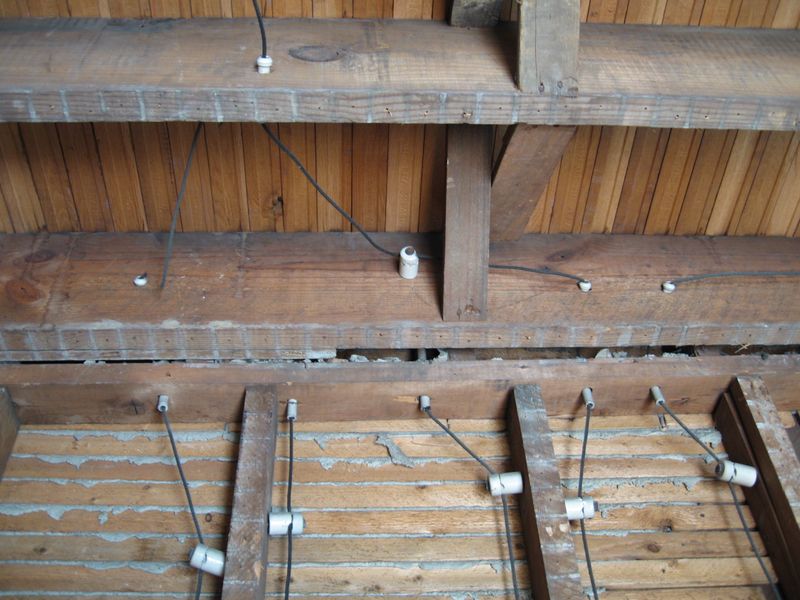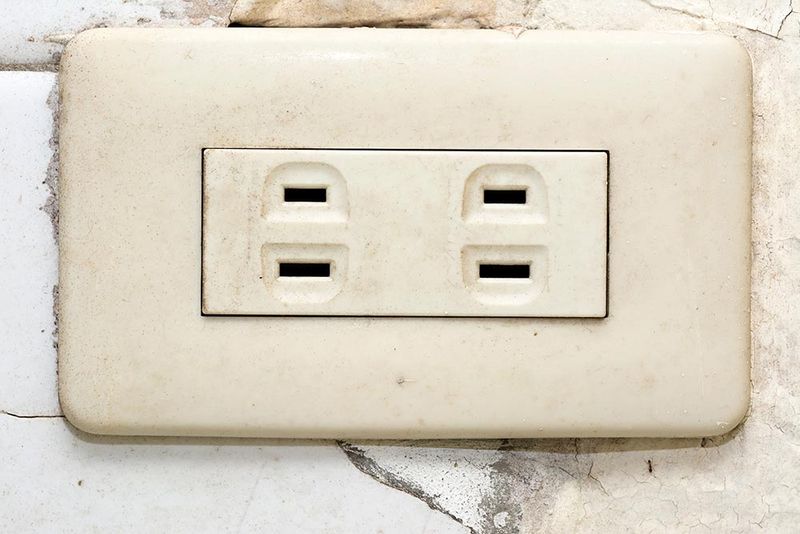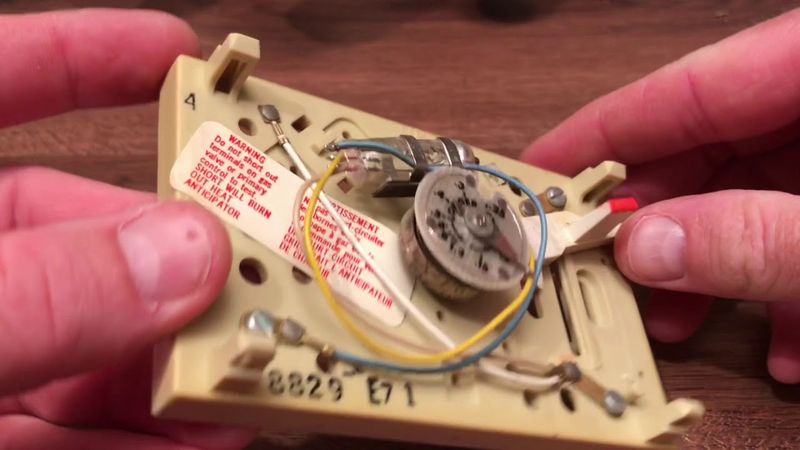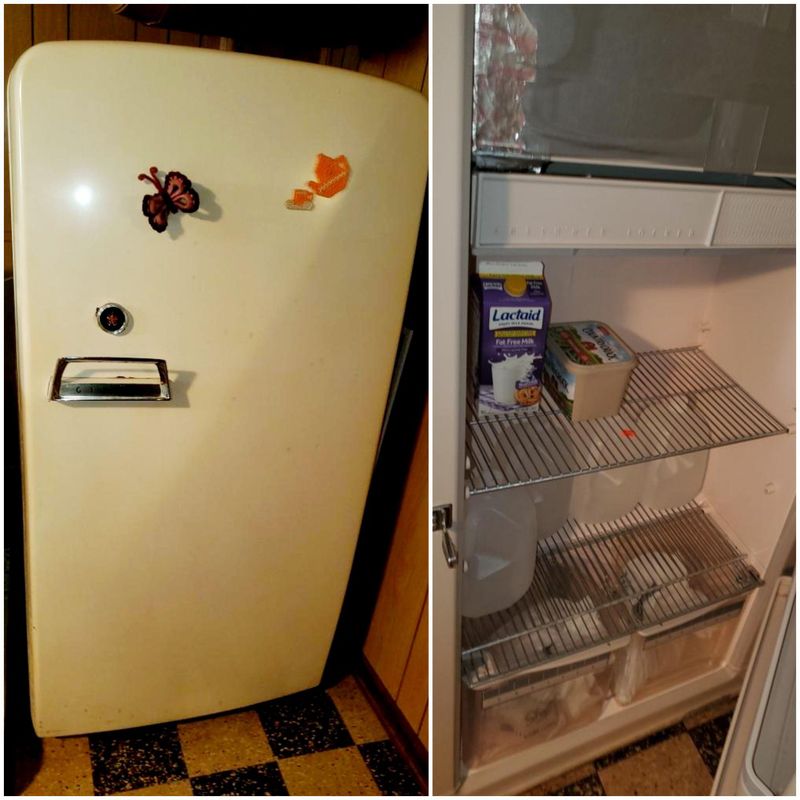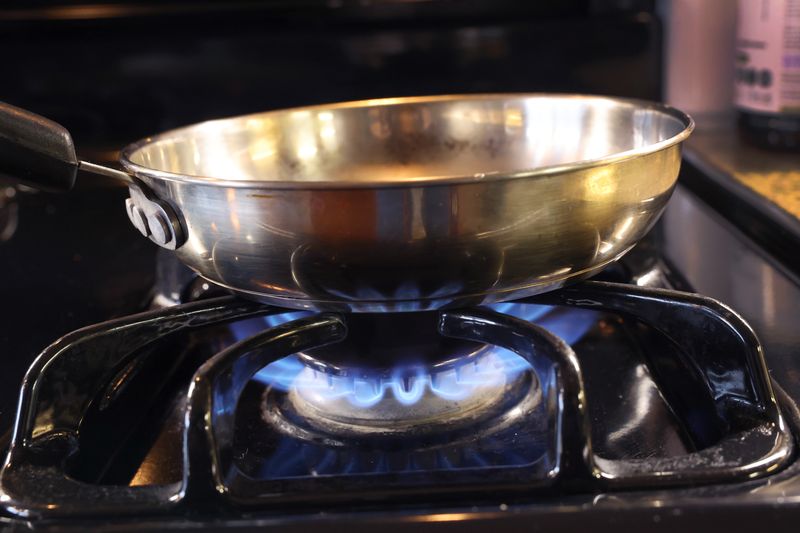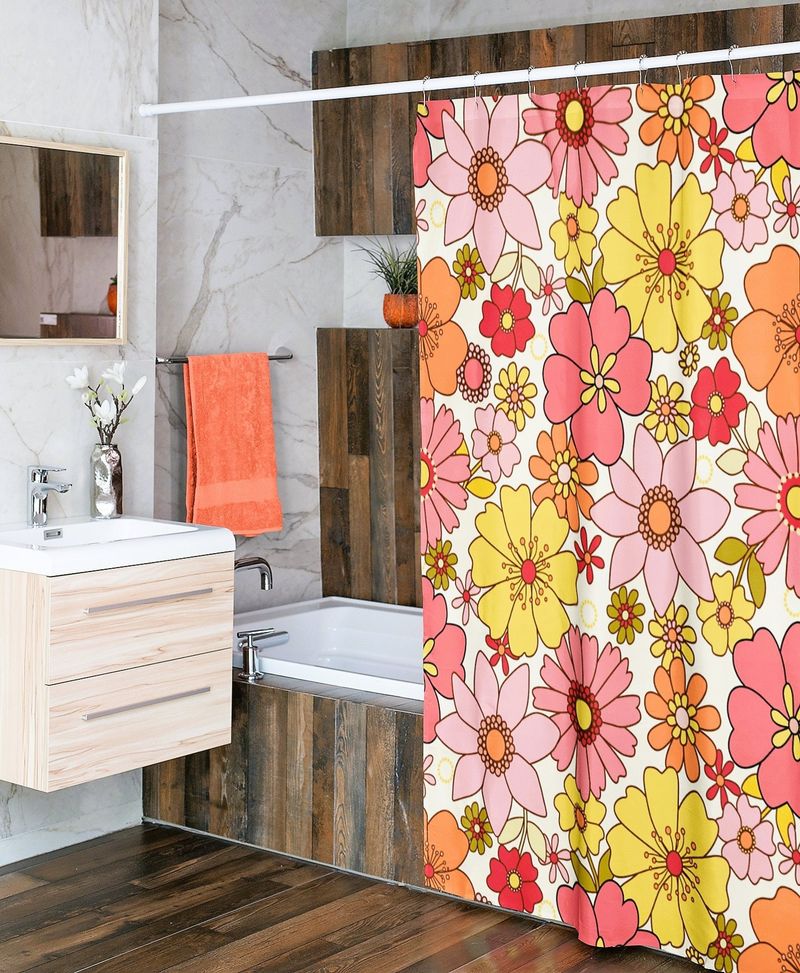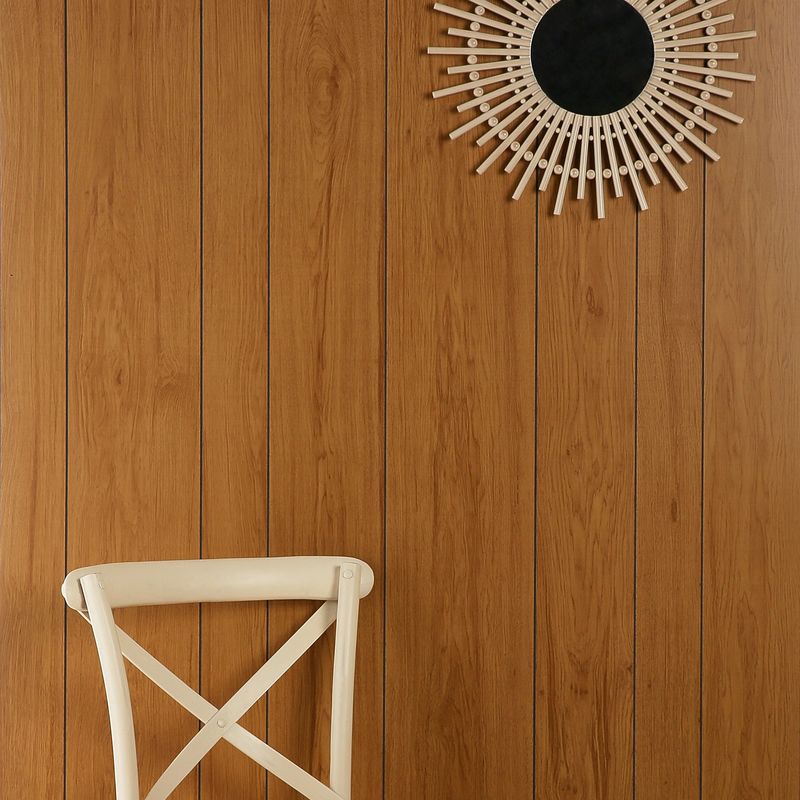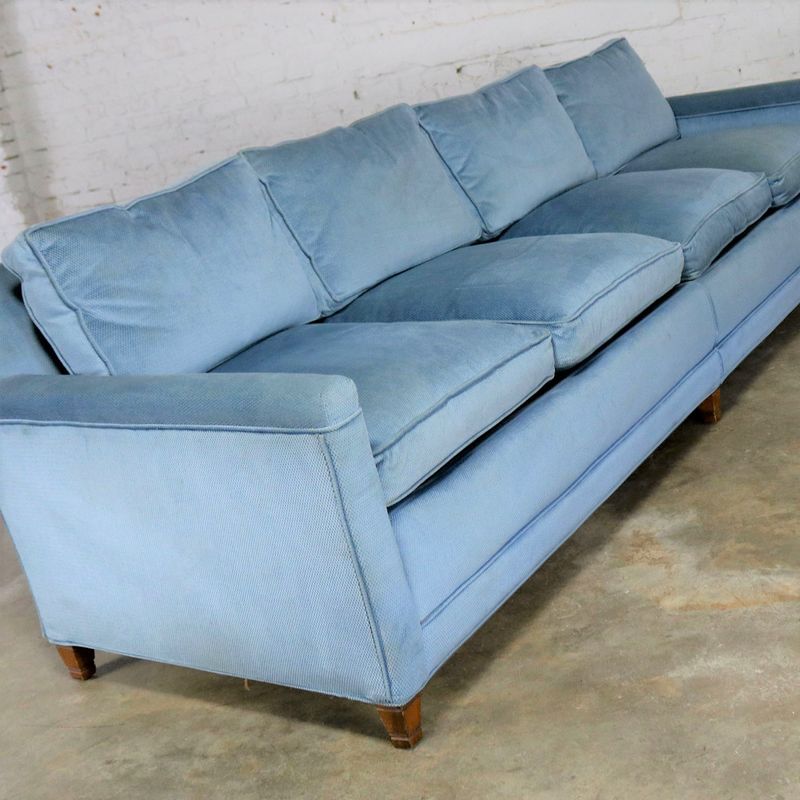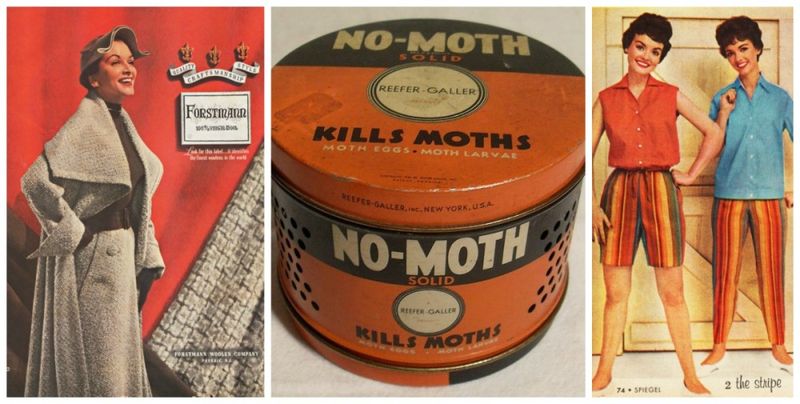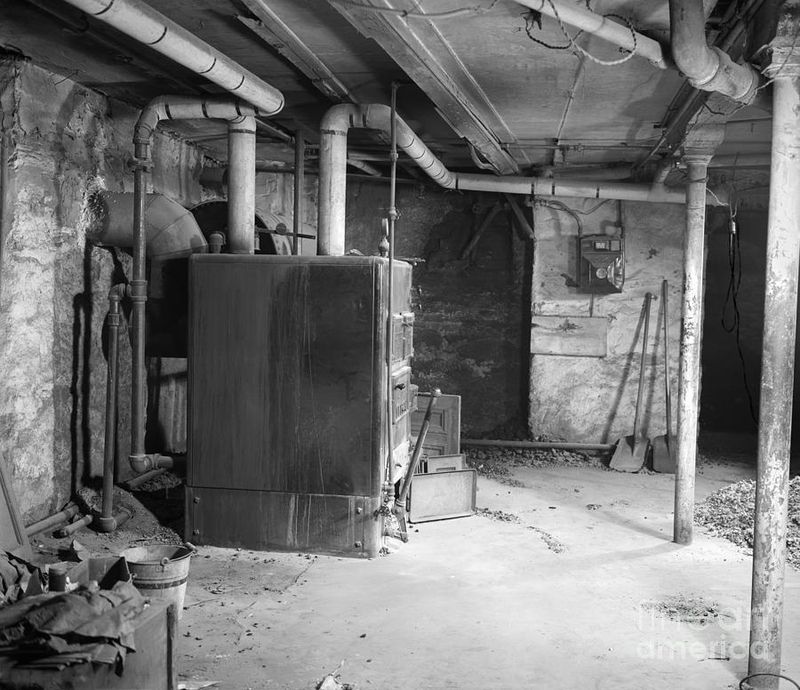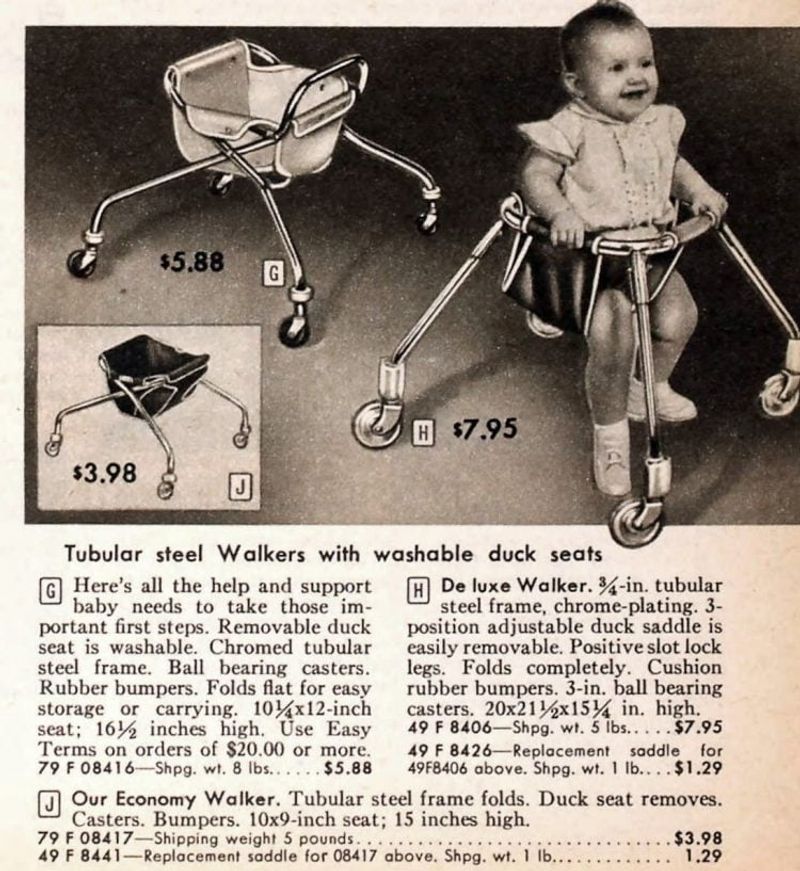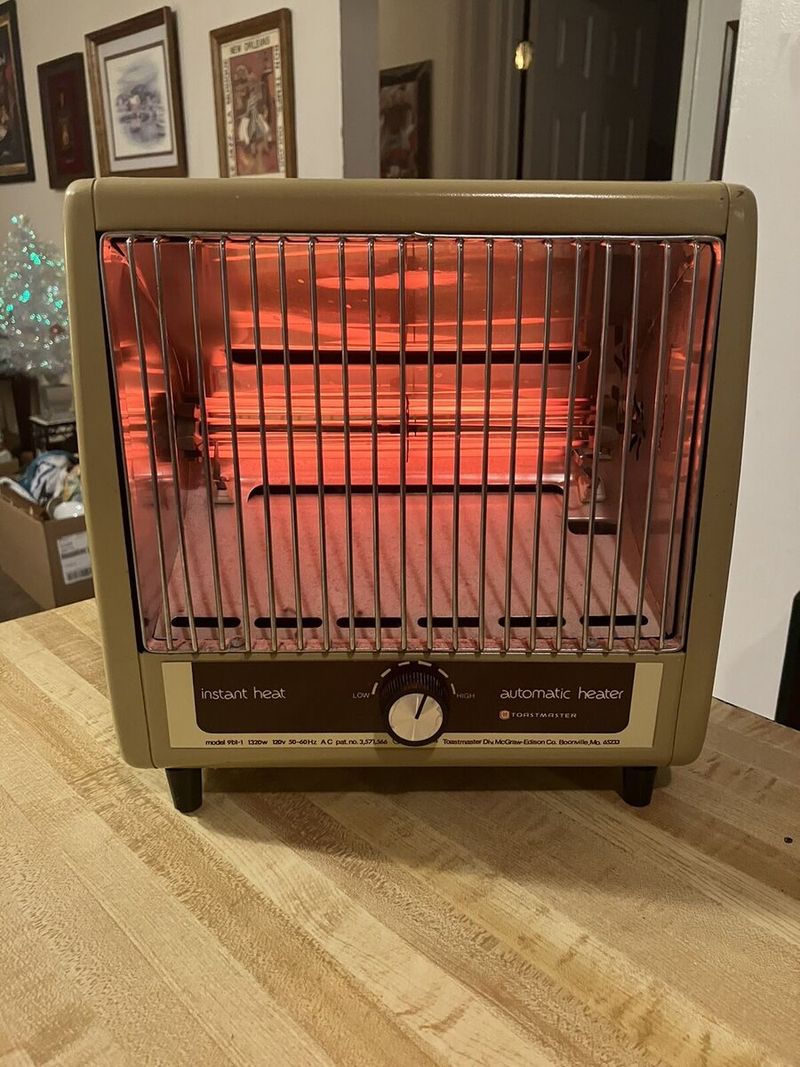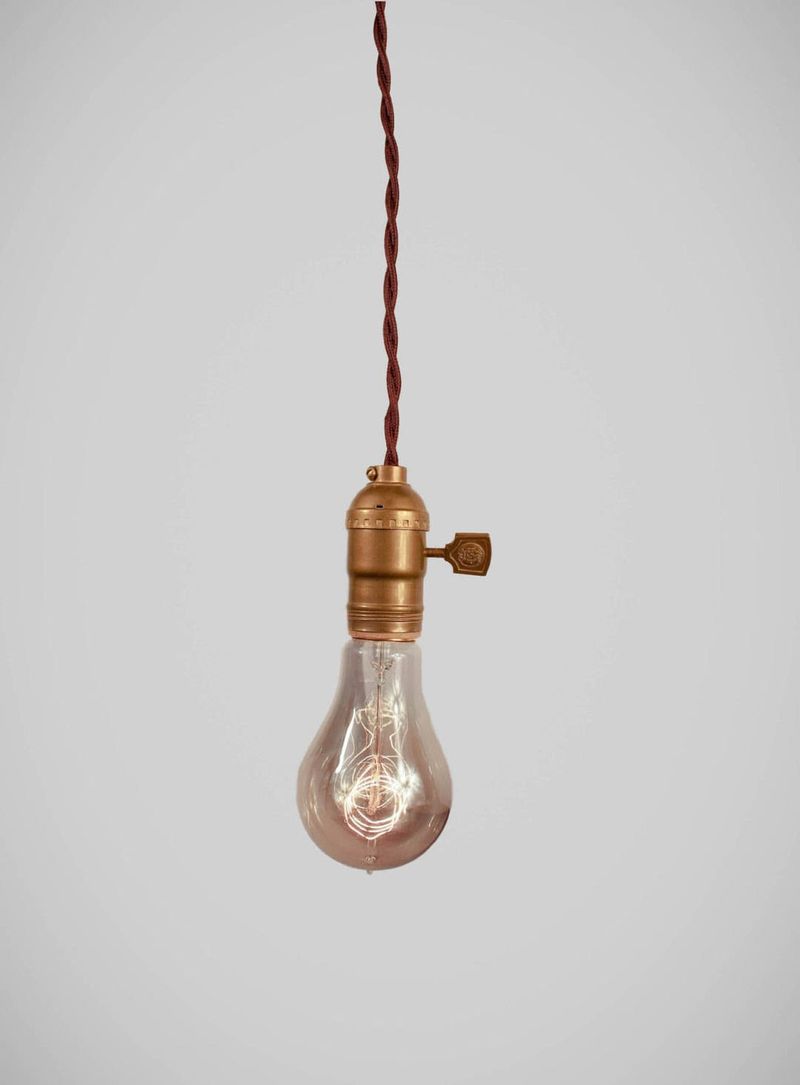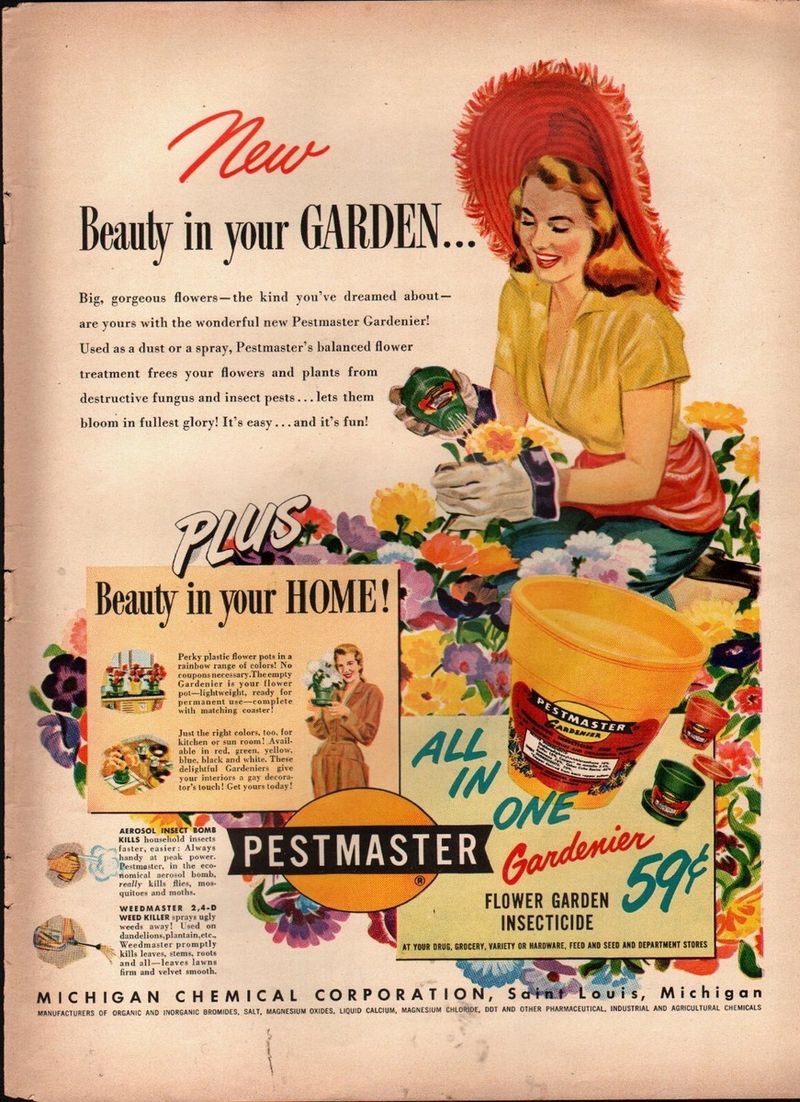The 1960s were a time of innovation and change. However, many everyday items found in households then, now raise eyebrows due to their inherent health and safety risks. This blog post explores 20 such household hazards that were common in the 1960s but are now recognized as dangerous, highlighting the evolution of safety standards over the decades.
1. Asbestos Insulation
Back in the 1960s, asbestos was the go-to material for insulation due to its fire-resistant properties. Families unknowingly surrounded themselves with this fibrous mineral, which was often loosely packed into walls and ceilings. Though it provided warmth, it also released fine fibers into the air.
These fibers, when inhaled, posed severe health risks, leading to lung diseases like mesothelioma. Despite its dangers, asbestos was commonplace, and its threat was largely unknown to homeowners. The visual of a dusty attic filled with asbestos is a haunting reminder of past oversight.
2. Lead-Based Paint
In the vibrant homes of the 1960s, lead-based paint added a splash of color to every room. From nurseries to kitchens, its durability and bright hues made it a decorator’s favorite. But beneath its glossy surface lurked a silent danger.
As the paint aged, it would chip and crack, releasing toxic lead dust into the home environment. Children, with their curious nature, were especially at risk, often ingesting the chips. This exposure led to severe health issues, particularly affecting cognitive development and causing neurological damage.
The legacy of lead paint remains a critical lesson in product safety.
3. Indoor DDT Sprays
DDT was a household staple in the 1960s, marketed as a miracle pesticide that kept homes insect-free. Families liberally sprayed it around doorways and carpets, trusting its effectiveness to shield them from pesky bugs. However, the confidence in its safety was misplaced.
DDT’s chemical composition posed significant health risks, impacting both human health and the environment. It persisted in the home, on surfaces, and in the air, leading to chronic exposure. Only later did scientists reveal its connection to serious health conditions, shifting public perception and leading to its eventual ban.
4. Knob-and-Tube Wiring
Knob-and-tube wiring was a hallmark of older homes, still prevalent in the 1960s. Easily identified by its ceramic knobs and tubes, it snaked through attics and behind walls. Initially seen as innovative, it eventually became a fire hazard due to age and deterioration.
The system lacked grounding, and its open-wire design posed risks of electrical shorts and fires. As homes increased their electrical loads, the outdated system was often overwhelmed, leading to dangerous consequences. Though nostalgic, knob-and-tube wiring is now synonymous with the need for modern electrical upgrades.
5. Ungrounded Two-Prong Outlets
Two-prong outlets were ubiquitous in 1960s homes, their simplicity reflecting the era’s electrical needs. Yet, their lack of a grounding pin left appliances without protection from electrical faults.
Homeowners were unaware of the potential danger these outlets posed. Without grounding, electrical surges could lead to shocks or fires. The advent of grounding in electrical systems introduced an essential safety feature that the two-prong design lacked.
While these outlets symbolized convenience, they also represented a gap in safety standards that would soon be addressed in later decades.
6. Mercury Thermostat Switches
The 1960s embraced mercury as a technological marvel, especially in thermostat switches that graced many homes. These round, metal dials held beads of mercury that allowed for precise temperature control. However, little did homeowners know that this liquid metal posed toxic threats.
Accidental breakages could release mercury, a potent neurotoxin, into living spaces, creating health hazards. The efficiency of these thermostats was overshadowed by the hidden risks they brought along. As awareness grew, the transition to safer alternatives marked a shift in home safety priorities.
7. Radium-Painted Clocks & Watches
In the 1960s, the gentle glow of radium-painted watches and clocks was a nighttime comfort, guiding many through dark hours. This radioactive paint, however, was far from benign, as its luminescence came with a cost.
Prolonged exposure to radium increased cancer risks, a fact unknown to the many who cherished these items. The seductive glow masked the ticking clock of radiation exposure, which would later be recognized as hazardous. These artifacts of the past now serve as stark reminders of the intersection between innovation and safety.
8. Freon-Leaking Refrigerators & A/C Units
Refrigerators and air conditioners from the 1960s often relied on freon, a chlorofluorocarbon, to keep things cool. These appliances were the height of convenience, yet they harbored hidden environmental dangers.
Over time, leaks could release freon, contributing to ozone layer depletion. Homeowners were unaware of the broader environmental impact, focusing instead on their practical benefits. As understanding of environmental science expanded, these units became emblematic of the need for eco-friendly innovations in household technology.
9. Unvented Gas Space Heaters
In the chill of winter, the unvented gas space heater was a staple in many 1960s living rooms. Its promise of warmth came with an invisible threat: carbon monoxide. Without proper ventilation, these heaters released harmful gases indoors, posing health risks.
Families enjoyed the immediate comfort, often unaware of the silent danger lurking in the air. As carbon monoxide awareness grew, the design of heating appliances evolved to prioritize safety, highlighting shifts in consumer expectations and regulations.
10. Open-Flame Gas Stoves
Open-flame gas stoves were the heart of the 1960s kitchen, offering quick and efficient cooking. However, the absence of safety features like automatic shutoff systems left homes vulnerable to accidents.
The open flames were a constant fire risk, and potential gas leaks could lead to carbon monoxide exposure. Despite the risks, these stoves were beloved for their practicality and efficiency. Over time, improvements in stove technology would address these hazards, reflecting the growing importance of kitchen safety.
11. Overheated Teflon Pans
Teflon pans revolutionized cooking in the 1960s, promising easy cleanup and nonstick convenience. Yet, when overheated, these pans released fumes that were far from harmless.
The fumes contained toxic chemicals, potentially harmful to both humans and pets, especially birds. Unaware of this, many households continued to use Teflon pans at high temperatures. Subsequent research and media coverage highlighted these dangers, leading to increased caution and changes in cookware safety standards.
12. Vinyl (PVC) Shower Curtains
Vinyl shower curtains, a staple of 1960s bathrooms, added a splash of color and privacy. Yet, when the bathroom filled with steam, these curtains released volatile organic compounds into the air.
The chemicals were byproducts of plastic manufacturing and posed health risks with prolonged exposure. Homeowners were blissfully unaware, focusing on aesthetics and practicality. This oversight underscores the importance of understanding the materials in everyday household products.
13. Formaldehyde Plywood Paneling
The faux-wood paneling of the 1960s offered an affordable way to modernize homes. However, the plywood often contained formaldehyde resin, a chemical that off-gassed into indoor air.
Exposure to formaldehyde could irritate the eyes, nose, and throat, and long-term exposure raised cancer concerns. Despite these risks, the paneling’s aesthetic appeal kept it in vogue until awareness of its dangers grew. Today, it serves as a lesson in the hidden hazards of budget-friendly home improvements.
14. Unprotected Foam-Cushioned Sofas
The plush sofas of the 1960s, filled with polyurethane foam, were the epitome of comfort. Unfortunately, this material was highly flammable and a source of toxic fumes.
Without modern fire retardants, these sofas could easily ignite, posing fire hazards in homes. Additionally, the foam off-gassed chemicals that contributed to indoor air pollution. These safety concerns eventually prompted changes in furniture manufacturing standards, prioritizing both comfort and safety.
15. Naphthalene Mothballs
Mothballs made from naphthalene were a common sight in 1960s closets and dresser drawers, used to protect garments from insects. However, the strong odor masked the chemical’s potential dangers.
Naphthalene is a volatile substance that, when inhaled, could cause respiratory issues and other health problems. Homeowners were largely unaware of these risks, relying on mothballs for pest control. The shift towards safer alternatives has since highlighted the balance between effective pest management and health safety.
16. Coal-Fed Home Furnaces
Coal-fed furnaces were the workhorses of home heating in the 1960s, providing warmth but also challenges. These furnaces required constant tending and produced ash and smoke.
The backflow of smoke and soot could pollute indoor air and lead to respiratory issues. As cleaner energy sources became available, coal furnaces were phased out, marking an important transition in both environmental awareness and heating technology. They remain a symbol of past energy practices and evolving standards.
17. Baby Walkers with No Brakes
Baby walkers in the 1960s were designed for mobility but lacked brakes, allowing for uncontrolled movement. While they offered infants a sense of independence, they also posed safety risks.
Without brakes, babies could easily collide with obstacles or fall down stairs, leading to injuries. Parents loved the convenience, but the potential dangers were significant. The evolution of child safety standards has since led to safer designs, reflecting ongoing efforts to protect young ones.
18. Unshielded Space Heaters
Unshielded space heaters in the 1960s were efficient at warding off the cold but brought the risk of fire. With exposed coils or hot surfaces, they could easily ignite nearby materials.
These heaters were popular for their effectiveness, yet their design often overlooked safety. Incidents of fires prompted a reevaluation of heating appliance design, leading to improved safety features in later models.
19. Bare, Exposed Light Bulbs
Ceiling fixtures with bare light bulbs were typical in 1960s homes, offering direct light but also posing a burn hazard. Without protective shades, these bulbs were easy to bump into, especially in cramped spaces.
The risk of burns or fires from exposed bulbs was overlooked in favor of their lighting utility. This simplicity in design eventually gave way to fixtures that balanced safety with functionality, reflecting an evolving understanding of household hazards.
20. Household “Beauty” Pesticides
In the quest for beautiful indoor plants, 1960s households often used strong pesticides. These chemical solutions promised lush growth but came with health risks.
Used indoors, these pesticides contributed to indoor pollution and posed risks to household members and pets. As the understanding of chemical impacts grew, the approach to plant care shifted towards safer, eco-friendly practices, emphasizing a balance between aesthetics and health.

